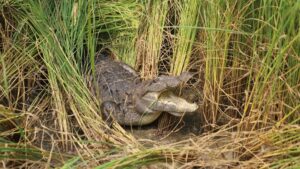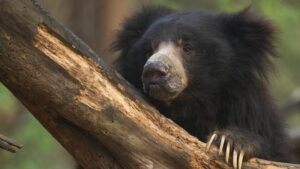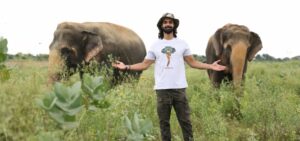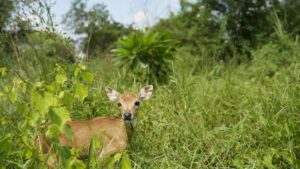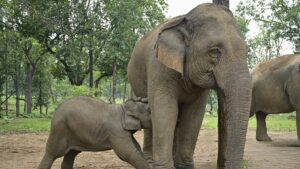Animals inhabit a wide range of ecosystems — from lush forests to arid scrublands and golden deserts — each delicately balanced to support diverse life. Every species plays a role in maintaining its stability: wild animals hunt to survive, defend themselves when threatened, and otherwise coexist peacefully, gathering at waterholes to quench their thirst — a testament to the harmonious, natural balance they maintain.
But this balance has been deeply disrupted by human actions through habitat destruction, deforestation, pollution, and poaching. As animals lose their homes, they are forced to wander into human settlements in search of food, water, and shelter. This results in what we call ‘human-wildlife conflict’, and we often ignore our own role in creating the crisis.
At Wildlife SOS, we have witnessed cases of human-wildlife conflict where timely intervention was what saved animals from the brink of death. Jenny, a sloth bear cub, was rescued after a herd of cattle trampled her mother and sibling. She is now healing safely at our Agra Bear Rescue Facility. Similarly, Bani, a baby elephant left paralysed after a train accident, received intensive care at our Elephant Hospital Campus and has since regained her ability to walk.
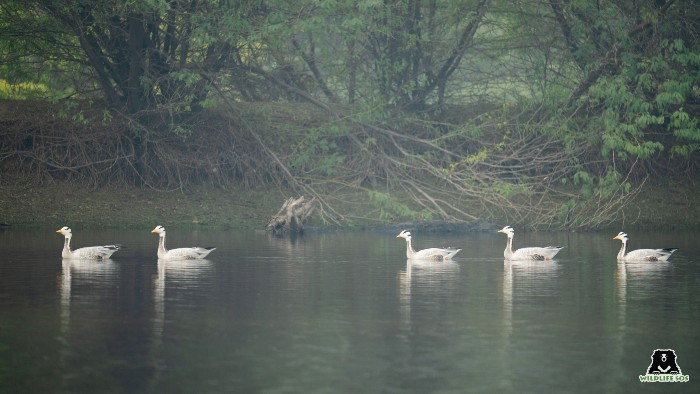
While these cases were consequences of human encroachment in wild habitats, there are sadly those that expose the darkest side of human behaviour — not driven by fear, but by deliberate cruelty. One such heartbreaking case recently emerged from Chhattisgarh in April of 2025, where a wild sloth bear was brutally tortured and killed by villagers, who even recorded the horrific act. The footage shows the defenseless bear being beaten, its ears pulled, head struck repeatedly, blood dripping from its mouth as it writhes in pain. This was no act of self-defense, it was a calculated and senseless act of violence against a protected species under the law of India.
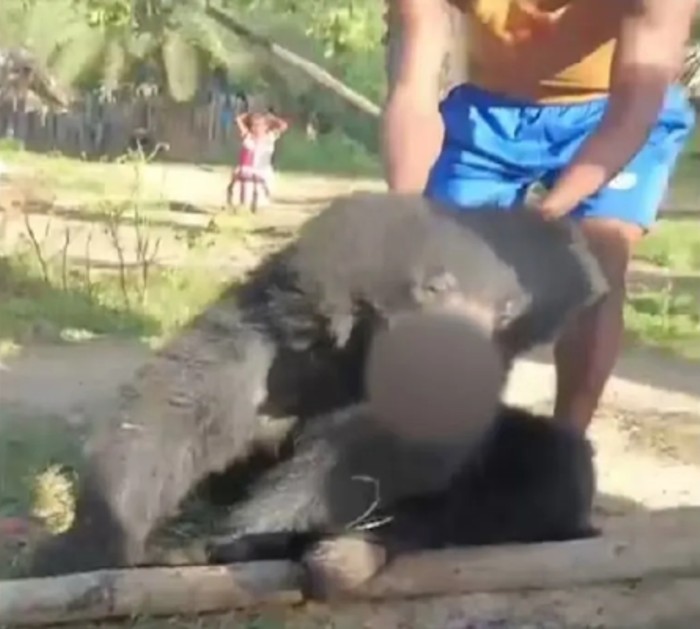
 In response to public outrage, the Divisional Forest Officer of Sukma has formed special investigation teams to identify and apprehend those responsible for the sloth bear attack. [Photo © The Statesman]
In response to public outrage, the Divisional Forest Officer of Sukma has formed special investigation teams to identify and apprehend those responsible for the sloth bear attack. [Photo © The Statesman]This tragedy not only exposes serious gaps in our wildlife protection systems, but also reflects a deeper moral crisis — a heartbreaking loss of empathy, accountability, and humanity.
Why This Crime Matters — Legally and Morally
Beyond raising difficult questions about the very definition of humanity, this appalling act is also a serious violation of the law. Sloth bears are protected under Schedule I of the Wildlife Protection Act (WPA), 1972, the highest level of protection afforded to any species in India, alongside species like tigers and elephants.
Under the WPA, killing, harming, or even disturbing a Schedule I species is a criminal offense. The following is stated under the law:
- Arrest Without a Warrant: Forest and police officials are legally allowed to seize the wild captive animal against which an offence has been committed and arrest offenders in possession of “any trap, tool, vehicle, vessel or weapon” on the spot, without needing a warrant.
- Denial of Bail: In serious cases, especially those involving Schedule I species and repeat offenses, bail can be denied to the accused, ensuring they remain in custody during investigation. Bail can only be granted if “the Public Prosecutor has been given an opportunity of opposing the release on bail” and “when the Public Prosecutor opposes the application and the Court is satisfied that there are reasonable grounds for believing that the accused is not guilty of the offence and will likely not commit any offence while on bail”.
- Strict Punishment: Convictions can lead to imprisonment ranging from 3 to 7 years, or hefty fines — and in some cases, both. Depending on the severity of the cruelty, repetition of offense, or the conservation status of the animal involved, courts may impose additional fines or extend the imprisonment sentence.
- Additional Penalties: Any license or permit held by the person convicted of an offence against this Act will be cancelled. A conviction also results in a criminal record, which carries long-term social and legal implications for the offender.
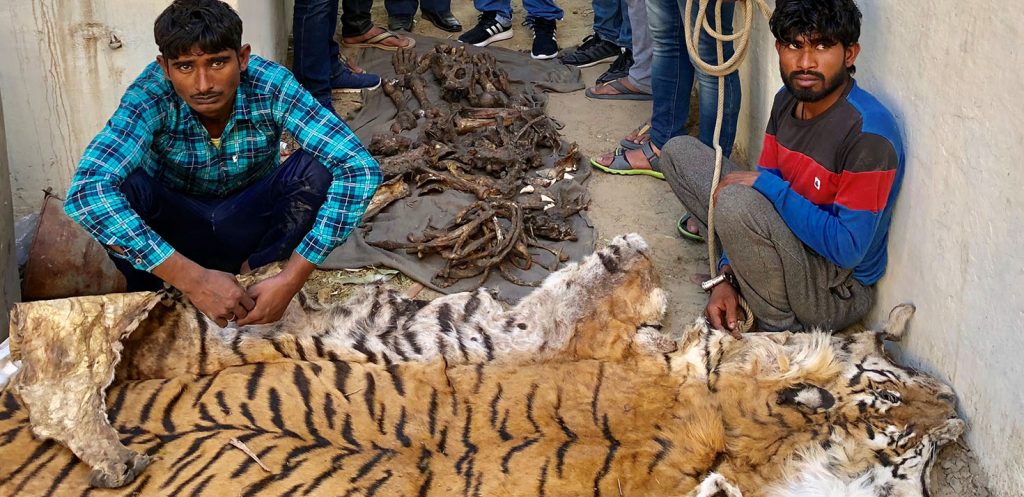
These stringent penalties are meant to deter exactly the kind of cruelty witnessed in the Chhattisgarh sloth bear case and they must be enforced with full seriousness.
We are heartened to see that authorities in Chhattisgarh have taken swift action by arresting several of the individuals involved in this horrific crime. This timely response sends a clear and powerful message: wildlife crimes will not be tolerated, and those who commit them will face serious legal consequences.
Such prompt enforcement sets an important precedent and thankfully, this is not an isolated instance. In 2020, public outrage followed the tragic killing of a pregnant elephant in Kerala, who died after consuming a pineapple filled with firecrackers. The culprits were arrested and charged under multiple laws, including the Wildlife Protection Act and the Prevention of Cruelty to Animals Act. In another case that took place in the same year, a group of men were filmed beating a Gangetic dolphin to death using sticks and axes in the shallow waters of a canal in Uttar Pradesh. Following public outrage, three individuals were arrested and charged under the Wildlife Protection Act.

These cases remind us that when society unites in condemnation of savage acts and authorities act decisively, accountability is possible, and justice for wildlife can be achieved. However, once news headlines fade, these cases are often forgotten. Consistent follow-ups on legal proceedings and outcomes are essential to ensure justice is served and also keep these significant issues alive in our collective conscience.
But What More Can We Do?
While it is reassuring to see the law take its course in cases like these, the real question is: how can we prevent such tragedies from happening in the first place? What can we, as individuals who share this land with wild animals, do to create a safer, more compassionate world?
Often, fear and misinformation lie at the heart of such violence. When communities lack awareness and systems fail to respond in time, tragic outcomes for the voiceless become more likely. Prevention begins with understanding and preparedness.
Community Sensitisation and Awareness:
Many villagers and even townspeople do not know how to respond appropriately when they encounter wildlife. In the absence of awareness, fear often gives way to violence. Sadly, our school education system also lacks consistent environmental education that focuses on wildlife protection. Introducing wildlife protection and empathy-based learning can nurture a generation that is more aware, responsible, and kind towards animals.
Regular sensitisation sessions, especially in areas near forest fringes, can equip people with the knowledge to stay safe and respond calmly. Most importantly, they learn what not to do when they come across wild animals. It is also important to remember that the young ones are not just future policymakers and citizens, they are also influencers within their families and communities at present. Reaching them early can transform how future societies engage with wildlife.
Strengthening Human-Wildlife Conflict Management:
Effective conflict management is crucial. This includes having trained rescue teams, early warning systems (EWS), and a widely publicised toll-free number for emergencies. Collaboration with local wildlife rescue NGOs like Wildlife SOS can also ensure faster and more informed intervention.
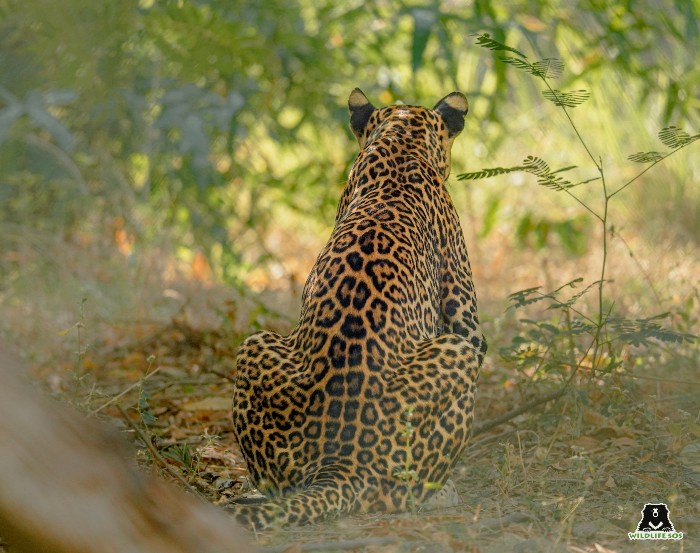
Establishing Clear Reporting Channels:
Communities often don’t know how or whom to report wildlife sightings or conflicts to. Creating simple, accessible reporting systems can allow authorities to respond swiftly, before a situation escalates.
Strengthening animals protection laws and enforcement:
While India has several laws to protect animals, ranging from the Wildlife Protection Act, 1972 (WPA), and the Prevention of Cruelty to Animals Act, 1960 (PCA), to relevant sections under the IPC and Bharatiya Nyaya Sanhita (BNS), gaps in enforcement and implementation remain.
Despite this robust legal framework, several challenges persist. The PCA prescribes weak penalties, with fines as low as ₹10, which fail to act as effective deterrents against cruelty towards animals, wild or stray. Traditional practices like animal sacrifice often conflict with modern animal welfare standards. Additionally, public awareness is limited, many people remain unaware of their legal responsibilities or how to report violations. Adding to this issue is the fact that animal protection laws vary with inconsistent enforcement and restrictions across states, making it even more difficult for the average person to understand and comply with the law.
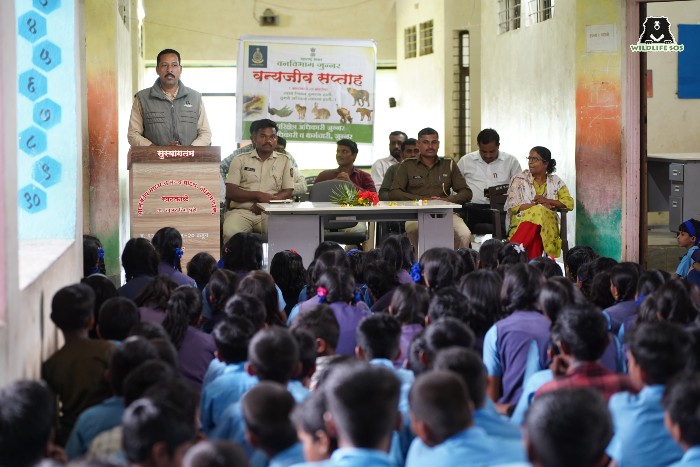
 Wildlife SOS conducts awareness programs for students, villagers, and forest officials to share crucial information on wildlife, including how to respond safely and responsibly during chance encounters with wildlife. [Photo © Wildlife SOS/ Akash Dolas]
Wildlife SOS conducts awareness programs for students, villagers, and forest officials to share crucial information on wildlife, including how to respond safely and responsibly during chance encounters with wildlife. [Photo © Wildlife SOS/ Akash Dolas]The key to address such issues lies in investing in coexistence, which can be done through education, preparedness, compassion, and stronger penalties. Because real justice for our wildlife is not just punishment for wrongdoers, but a future where such cruelty never occurs again.
At Wildlife SOS, we’ve witnessed time and again how human-wildlife conflict, driven by fear, shrinking habitats, and lack of awareness, often ends in tragedy. But we also know that viciousness is not inevitable. With compassion, coexistence, and community involvement, we can build a better future for both people and animals.
At Wildlife SOS, our mission goes far beyond just rescuing animals. We are committed to long-term, sustainable solutions that protect both animals and the communities they live near.
- Rescue and Rehabilitation: We rescue wild animals caught in conflict situations and give them a second chance at life. Wildlife SOS operates 10 specialised rescue and rehabilitation centres across India for sloth bears, Asian elephants, leopards, Himalayan brown bears, and Asiatic black bears. Animals that cannot be released back into the wild due to injuries or trauma receive long-term care in these centres, where their health and well-being remain our top priority.
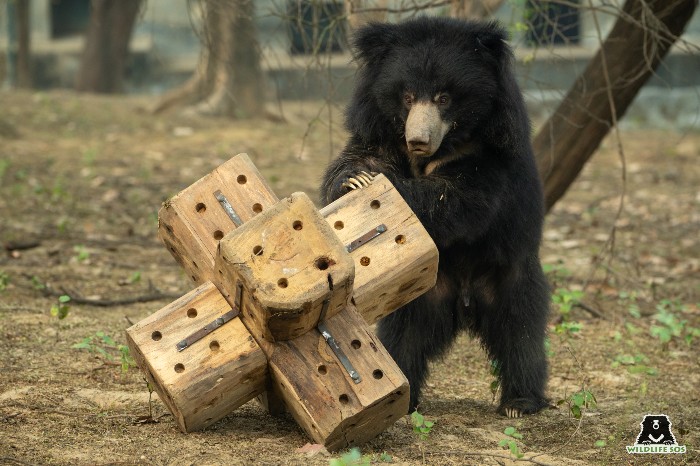
- Community Awareness and Training: We work closely with local communities and guide them with safe, non-violent responses to wildlife encounters, empowering them to coexist peacefully. Our education and outreach team also actively engages with school students, introducing them to concepts of wildlife conservation, animal welfare, and coexistence. These sessions not only sensitize students, but encourage them to carry forward values of empathy and protection into adulthood, ensuring long-term change across generations. Our team also conducts various awareness workshops and training sessions with forest officials to help train them for effective conflict mitigation strategies that have been developed world over.
- Rapid Response Units: In partnership with state forest departments, Wildlife SOS has established dedicated Rapid Response Units to intervene swiftly in emergencies, including urban wildlife rescues. If you spot a wild animal in distress in the urban jungles of Delhi, Uttar Pradesh, Gujarat or Jammu & Kashmir, you can contact our teams at:
- Delhi NCR – +91-9871963535
- Agra & Mathura in Uttar Pradesh – +91-9917109666
- Vadodara, Gujarat – +91-9825011117
- Jammu & Kashmir – +91-7006692300, +91-9419778280
- Policy Advocacy and Conservation Initiatives: We push for stronger wildlife protection laws and improved enforcement to protect India’s precious wildlife from cruelty and exploitation. We also mobilise public support through online petitions, urging decision-makers to take stronger action for animal protection. One such initiative is our Refuse to Ride campaign, which aims to educate tourists and the general public about the cruelty behind elephant rides. The campaign has garnered widespread support and helped raise awareness about the physical and psychological abuse these elephants endure in the name of entertainment.
- Research and Wildlife Conflict Mitigation: Often working quietly behind the scenes, research forms a critical backbone of our conservation efforts at Wildlife SOS. Whether it’s tracking the movement patterns of sloth bears through radio telemetry or analysing scavenging behaviour of brown bears in the Himalayas, our research enables us to develop targeted, science-backed solutions to reduce human-wildlife conflict. These insights directly inform our mitigation strategies — from advocating for better waste management and land-use planning to designing effective intervention models that prioritise both community safety and wildlife welfare.
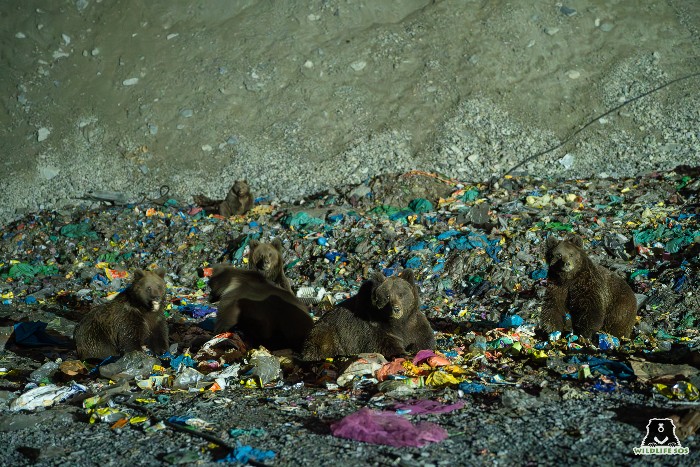
Our research is closely tied to our campaigns and conservation initiatives, including projects like Rewild for Wildlife, and our radio-collaring projects for sloth bears and brown bears. In Chhattisgarh, we radio-collared an elephant matriarch after encounters with her herd became frequent. Extensive research on herd dynamics and movement patterns could be gathered using the leading elephant’s location, enabling local authorities to track the elephant herd more effectively and reduce human-elephant conflict in the region. These efforts generate crucial data and drive meaningful change in how India safeguards its wildlife and natural habitats.
We believe that real change comes from working together — through empathy, education, and action. Every life matters, and every act of kindness brings us one step closer to a world where wildlife is not feared or harmed, but respected and protected.
If you feel strongly about protecting wildlife and giving them the care they deserve, consider supporting our rescue and conservation efforts with a donation. Every contribution helps save lives.
Feature image: Atharva Pacharne/ Wildlife SOS


